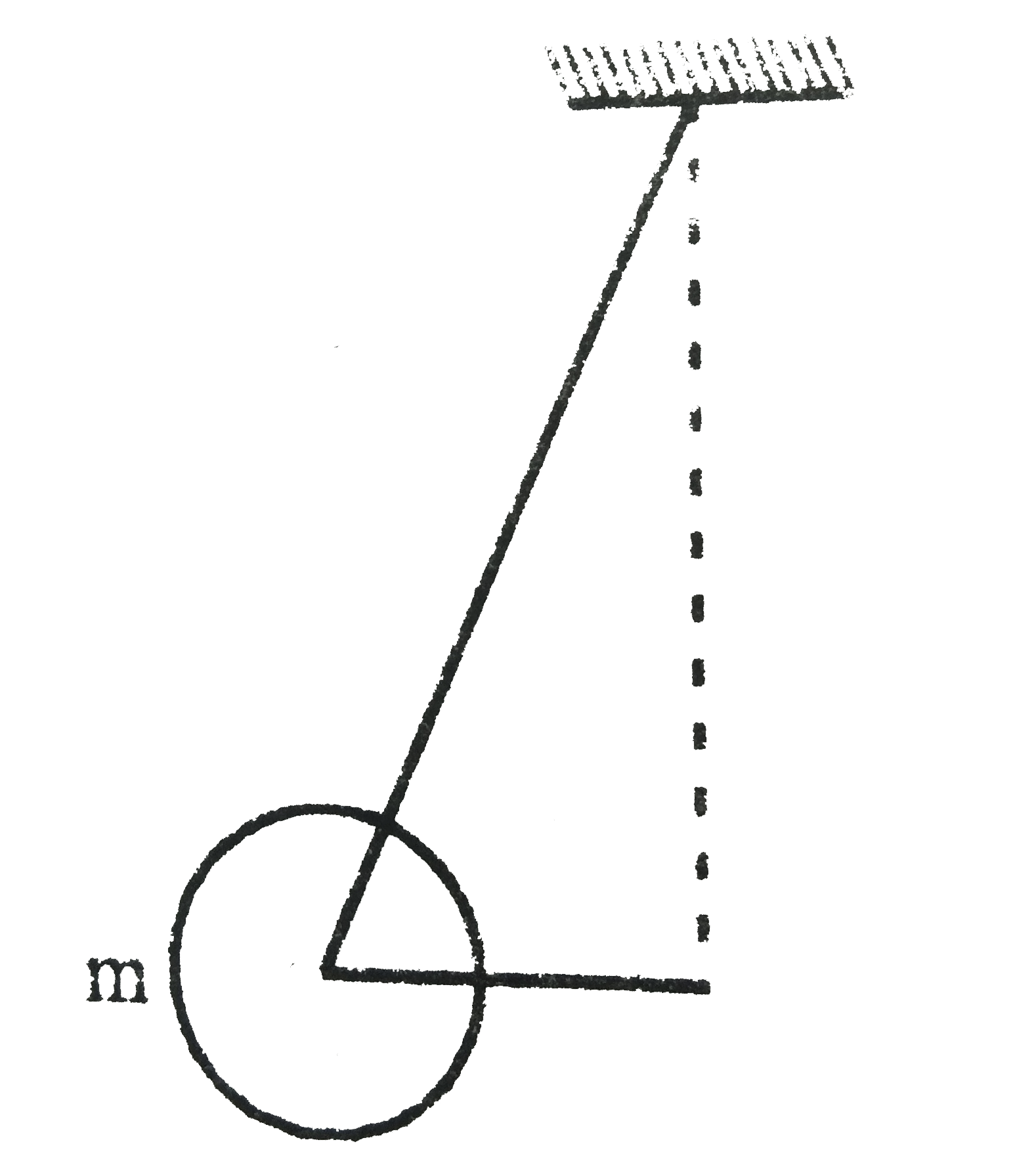A physical quantity ρ is calculated by using the formula ρ=110xy2z1/3, where x, y and z are experimentally measured quantities. If the fractional error in the measurement of x, y and z are 2%,1% and 3%, respectively, then the maximum fractional error in the calculation of ρ is Solution in Gujrati
0.005
0.05
0.06
0.07
ε=xy210z1/3
Take log and differentiate,
Δεε=Δexx+2Δyy−13Δzz
for maximum error,
Δεε=Δxx+2Δyy+13Δzz
=2%+(2×1%)+(13×3%)
=2%+2%+1%=5%
Topper's Solved these Questions
- BASIC MATHSBOOK - ALLEN CHAPTER - BASIC MATHSEXERCISE - EXERCISE-3
20 Videos
- BASIC MATHSBOOK - ALLEN CHAPTER - BASIC MATHSEXERCISE - UNIT & DIMENSIONS
19 Videos
- BASIC MATHSBOOK - ALLEN CHAPTER - BASIC MATHSEXERCISE - EXERCISE-2
80 Videos
- AIIMS 2019BOOK - ALLEN CHAPTER - AIIMS 2019EXERCISE - PHYSICS
39 Videos
- CIRCULAR MOTIONBOOK - ALLEN CHAPTER - CIRCULAR MOTIONEXERCISE - EXERCISE (J-A)
6 Videos
Similar Questions
Assertion: If the initial and final positions coincide, the displacement is a null vector.
Reason: A physical quantity can not be called a vector, if its magnitude is zero.
View SolutionFind the SI unit of (i) area, (ii) density, and (iii) momentum.
View SolutionThe equation of a curve is given as y=x2+2−3x.
The curve intersects the x-axis at
View SolutionA simple pendulum executing SHM in a straight line has zero velocity at 'A' and 'B' whose distances form 'O' in the same line OAB are 'a' and 'b'. If the velocity half wat between them is 'v' then its time period is
View SolutionA ball of mass (m)0.5kg is attached to the end of a string having length (L)0.5m. The ball is rotated on a horizontal circular path about vertical axis. The maximum tension that the string can bear is 324N. The maximum possible value of angular velocity of ball (radian/s) is -
 .
.
View SolutionA physical quantity rho is related to four variables alpha, beta, gamma and eta as rho=((alpha^3)(beta^2))/(etasqrt( gamma)) The percentage errors of measurements in alpha, beta, gamma and eta are 1%, 3%, 4% and 2% respectively. Find the percentage error in rho .
View SolutionThe dimensional formula for a physical quantity x is [M−1L3T−2] . The errors in measuring the quantities M,L,andT, respectively are 2%,3%,and4%. The maximum percentage of error that occurs in measuring the quantity x is
View SolutionAn experiment measure quantities x,y,z and then t is in calculate from the data as t = (xy^(2))/(z^(2)) if percentage error in x,y,z and are respectively 1% ,3%,2% then percentage error in t is
View SolutionA physical quantity x is being calculated by measuring y and z and using the formula x = y .z. .In a particular set of values, the value of y is measured with an error + 10%, whereas the value of z is measured with an error of +10%. For this particular set of values the error in the calculation of x will be
View SolutionA physical quantity Q is found ot depend on observables x, y and z obeying relation Q=(x^(3)y^(2))/(z). The percentage error in the measurments of x, y and z are 1%,2%and 4% respectively. What is percentage error in the quantity Q?
View SolutionA physical quantity Q is found to depend on observables x, y and z, obeying relation Q=x3y2z. The percentage error in the measurements of x, y and z are 1% , 2% and 4% respectively. What is percentage error in the quantity Q ?
View SolutionAn experiment measures quantities a,b,c and then X is calculated from X=(a^(1//2)b^(2))/(c^(3)). If the percentage errors in a,b,c are +-1% +-3% and +-2% respectively, then the percentage error in X can be :
View SolutionA physical quantity Q is found to depend on observables x, y and z, obeying relation Q=x3y2z. The percentage error in the measurements of x, y and z are 1% , 2% and 4% respectively. What is percentage error in the quantity Q ?
View SolutionThe dimensional formula for a physical quantity x is [M^(-1)L^(3)T^(-2)] . The errors in measuring the quantities M ,L and T respectively are "1%" each.Then maximum percentage error that occurs in measuring the quantity 'x' is
View SolutionA physical quantity x is given by x = a2b3c√d . If the percentage errors of measurement in a, b, c and d are 4%, 2%, 3% and 1% respectively, then calulate the percentage error in the calculation of x.
View SolutionA physical quantity Q is found to depend on quantities x,y,z obeying relation Q = (x^(2)y^(3))/(z^(1)) . The percentage errors in x, y, and z are 2%, 3% and 1% respectively. Find the percentage error in Q.
View Solution
